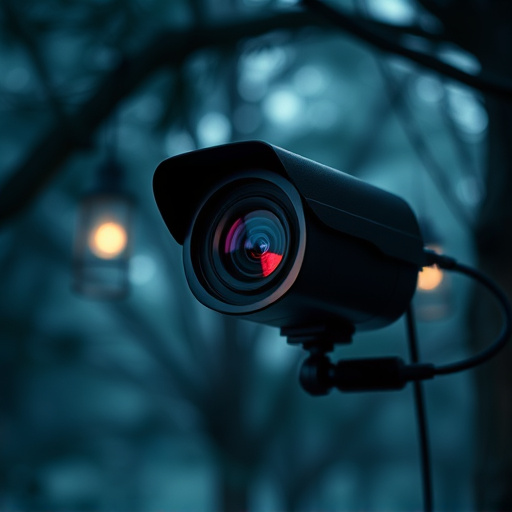Balancing privacy and security is crucial when setting up covert camera networks for elderly care. Use best hidden cameras with advanced encryption, motion activation, night vision, and remote viewing access to monitor residents discreetly while complying with local data privacy laws. Strategically integrate cameras into everyday objects like fire alarms and picture frames, maintaining residents' comfort and enhancing safety. Legal requirements mandate explicit consent and minimal privacy intrusion, with regular reviews of camera placement and data storage protocols.
“Uncover the secrets of implementing a covert camera network with our comprehensive guide on best practices. From evaluating privacy and security measures to mastering discreet placement strategies, we delve into optimal coverage for care facilities. Furthermore, explore ethical considerations and legal guidelines surrounding the use of hidden cameras in elderly care settings. Discover the ideal solutions with top-rated best hidden cameras for elderly care, ensuring safety while respecting individual privacy.”
- Evaluating Privacy and Security Measures for Installation
- Discreet Placement Strategies for Optimal Coverage
- Ethical Considerations and Legal Guidelines for Care Facilities
Evaluating Privacy and Security Measures for Installation
When setting up a covert camera network, especially for elderly care, evaluating privacy and security measures is paramount. It’s crucial to ensure that the best hidden cameras respect individual privacy rights while providing necessary surveillance. This involves selecting cameras with advanced encryption protocols to safeguard transmitted data, ensuring secure access only for authorized personnel, and installing them in strategic locations that minimize intrusiveness without compromising visual coverage.
For instance, when considering best hidden cameras for elderly care, opt for models with motion-activated alerts, night vision capabilities, and remote viewing access. These features allow caregivers to monitor activities discreetly while ensuring the well-being of residents. It’s equally important to comply with local data privacy laws and regulations, such as obtaining consent from residents or their guardians, clearly communicating surveillance practices, and securely storing recorded footage for limited access only.
Discreet Placement Strategies for Optimal Coverage
When deploying a covert camera network, especially in sensitive areas like elderly care facilities, discreet placement is paramount. The best hidden cameras for elderly care should be strategically positioned to offer comprehensive coverage without raising suspicion or disturbing residents’ comfort. This involves creative use of common objects—like fire alarms, light switches, and even pictures frames—to integrate cameras seamlessly into the environment.
A well-designed network leverages these best practices: minimizing visible cables, utilizing wireless connections where possible, and ensuring each camera has a clear line of sight to capture relevant activity. By adopting such strategies, care providers can create an unobtrusive monitoring system that enhances safety and security while respecting privacy—a critical balance for any elderly care facility.
Ethical Considerations and Legal Guidelines for Care Facilities
In care facilities, the installation of covert camera networks raises distinct ethical considerations and legal guidelines. The primary concern revolves around privacy and consent, particularly when monitoring elderly residents or those with special needs. Best hidden cameras for elderly care must be strategically placed to ensure minimal intrusion while providing necessary oversight.
Legal frameworks vary by region but generally require explicit consent from residents or their guardians for surveillance. Cameras should capture only essential areas relevant to patient safety and well-being, such as common spaces and high-risk zones. Regular reviews of camera placement and data storage protocols are crucial to maintain transparency and protect the rights of all individuals within the care setting.
When implementing a covert camera network, adhering to best practices ensures both effective monitoring and respect for privacy. Evaluating security measures, employing discreet placement strategies, and navigating ethical guidelines, such as those applicable in care facilities, are essential components of responsible surveillance. Investing in the best hidden cameras for elderly care requires a balance between enhancing safety and preserving dignity, ultimately fostering a secure environment through innovative technology while maintaining compliance with legal standards.
